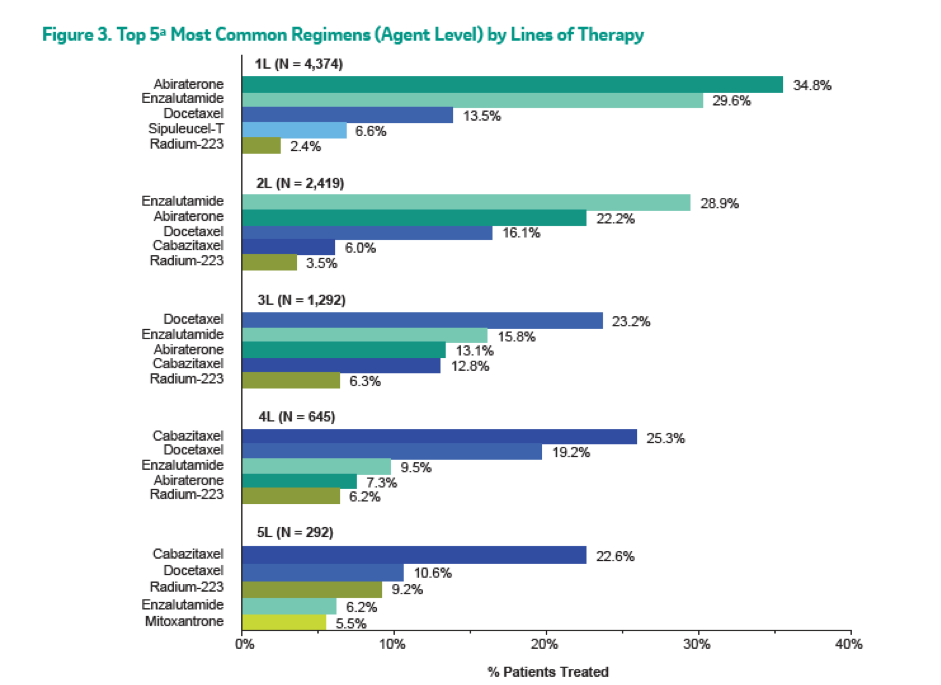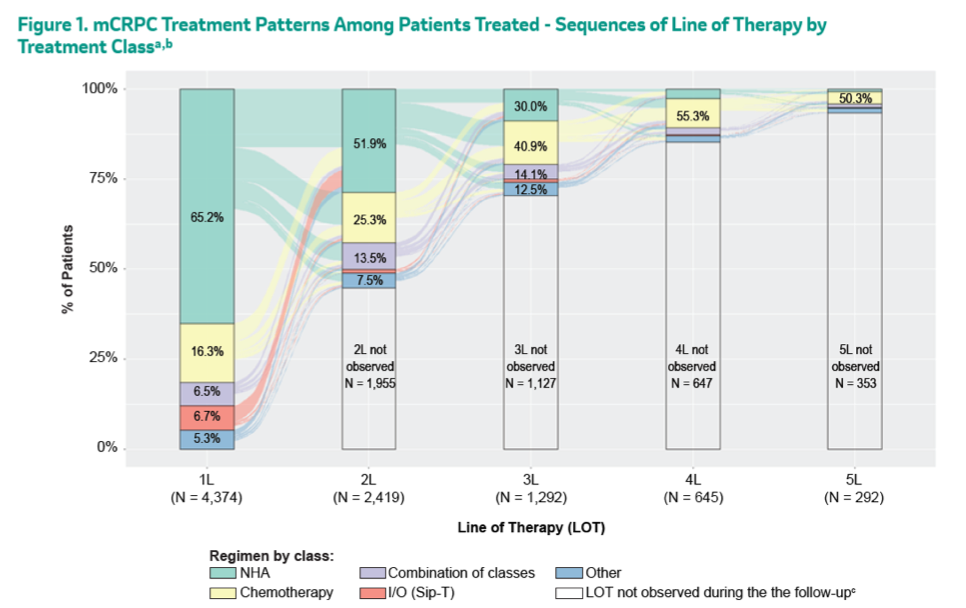In a poster presentation at this year’s European Society of Medical Oncology (ESMO) 2020 Virtual Annual Meeting, Dr. Neal Shore presented real-world data examining the utilization of these agents in the United States.
Relying on the US Flatiron Health Electronic Health Record-derived database, the authors identified patients with mCRPC diagnosed between January 2013 and March 2019. Of note, this dataset is enriched for patients treated in community (91%) as compared to academic (9%) settings.
The authors identified 5213 patients with mCRPC. They had a mean age of 73 years and the mean follow-up following diagnosis of mCRPC was 1.5 years. Among these, 84% of men received at least one line of therapy using a treatment with proven efficacy in advanced prostate cancer; 46% of men received at least two lines of therapy; 25% received at least three lines of therapy; 12% received at least four lines of therapy and 6% received at least 5 lines of therapy.
Treatment regimes differed somewhat based on line of therapy. In the first line space, abiraterone acetate (35%), enzalutamide (30%), and docetaxel (14%) were the most commonly used approaches. In the second line space, enzalutamide (29%), abiraterone 922%), and docetaxel (16%) remained the most commonly used treatments. In the third line space, docetaxel (23%), enzalutamide (16%), and abiraterone (13%) were the most commonly used approaches.

Interestingly, the authors demonstrated that a significant proportion of patients who received androgen axis targeting agents in the first line of therapy also received these in the second line of therapy.

The variation in sequencing observed demonstrates the urgent need for more guidance on the optimal sequencing of these agents. Recent work, including the CARD trial, should help in this regard.
Presented by: Neal Shore, MD, FACS, is the Medical Director of the Carolina Urologic Research Center. He practices with Atlantic Urology Clinics in Myrtle Beach, South Carolina
Written by: Christopher J.D. Wallis, Urologic Oncology Fellow, Vanderbilt University Medical Center Contact: @WallisCJD at the European Society for Medical Oncology Virtual Congress, ESMO Virtual Congress 2020 #ESMO20, 18 Sept - 21 Sept 2020


